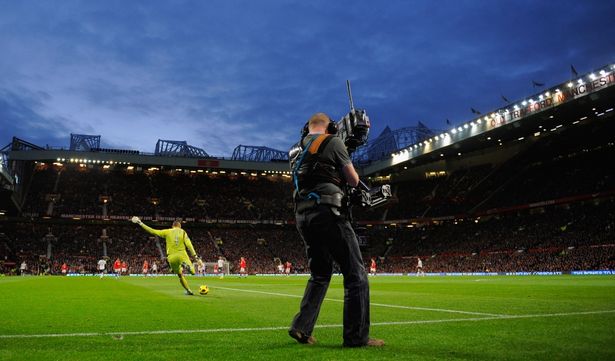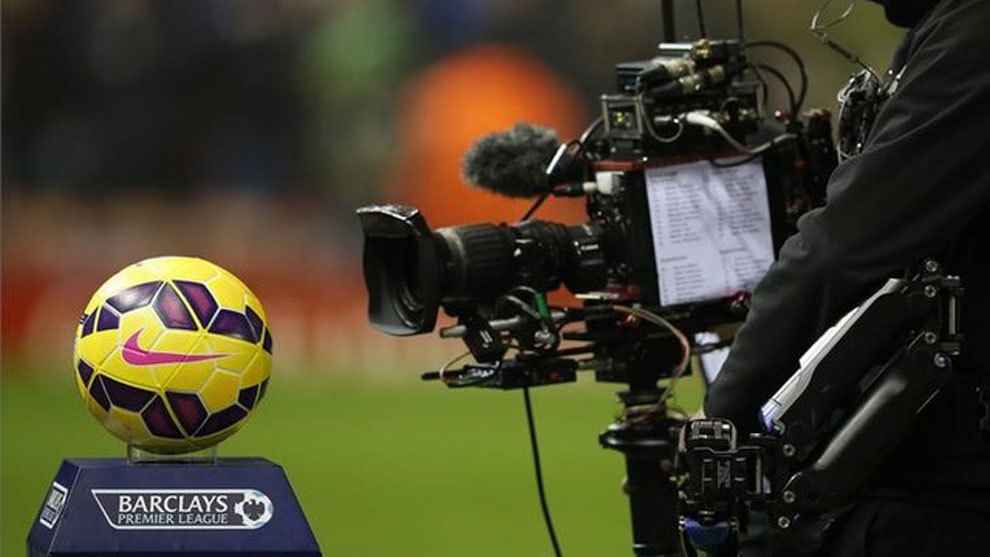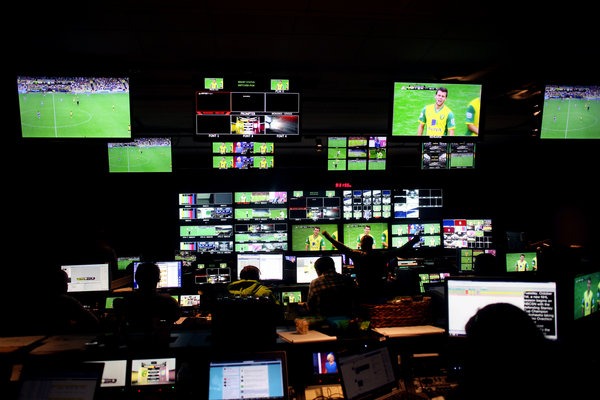This summer, the Football Association Premier League Limited assembled a team of corporate lawyers and headed for the High Court in Dublin.
They came to put a stop to illegal streaming of Premier League matches in Ireland. The defendants — who did not oppose the case — were the Irish internet service providers (ISPs): Eir, Sky, Virgin, and Vodafone.
The Premier League sought a flexible court order which would enable them to force ISPs to block illegal streams on the hoof, without having to ask for the court’s permission each time.
Pirated Premier League streams are easy to get hold of. In an affidavit seen by The Currency, Mark Plumb of the Premier League presented a poll showing 38 per cent of the Irish population admitted to having watched them. A majority said they didn’t consider the streams illegal. Then, for the committed pirate, there’s the dodge box option — a cheap device that plugs into your TV and gives a Sky-quality service, without the monthly bills.
The right to issue monthly bills is what’s at stake here. In the absence of dodge boxes and pirate streams, the only way to watch the Premier League in Ireland is to hand over as much as much as €94 per month to Sky, BT and Premier Sports, the official rights holders. The likes of Sky have paid the Premier League €9.2 billion for the broadcast rights for the next three seasons.

I first encountered a pirated live stream probably 10 years ago. So they aren’t new. What is new is the Premier League’s determination to shut them down. Two years ago, it brought a similar case to the High Court in London and won.
The Premier League got serious about stopping piracy when, starting in 2015, viewership of Premier League matches started to drop significantly for the first time. In 2015/16 it fell by 18 per cent; the following season by 14 per cent.
The drop was unprecedented. In the 25-year history of the League, the numbers had reliably gone up every year. Viewership, TV rights and sponsorship regularly set new records. For the Premier League, the drop in viewers was a problem. For many Premier League clubs, whose economic model is based on ever-rising TV revenue, it was a potential crisis.
The fragile economics of high-flying Premier League clubs
On Saturday, Leicester City’s Jamie Vardy scored his fifth goal of the season in a handy win over Arsenal. The win put Leicester second in the Premier League.
Leicester, a small club from the east midlands, is living the dream. Having somehow managed to overcome the six giants of English football (Chelsea, Arsenal, Tottenham, Liverpool, Manchester United and Manchester City) to win the Premier League in 2016, it’s still holding its own three years later.
Winning the league was a huge windfall for Leicester. Revenues rose by £104 million, or 81 per cent, the following year. The increase came from participation in the Champions League (a lucrative competition for the best European clubs), a better Premier League TV deal, and increased attendances.
Leicester’s success is ridiculously improbable. Small clubs with small budgets and no-name players never win major football leagues. They never even get close. So of all Premier League teams, you’d expect Leicester to be financially comfortable. It started out with relatively low costs (£80 million in 2015, compared to Manchester United’s £350 million-plus). It got a massive payday when it won the league. And attendances and commercial revenue rose and then stayed high. Yet, in the most recent results from 2018, Leicester’s profits fell 98 per cent to just £1.5 million.
Despite all its success on the pitch, Leicester is barely staying afloat financially. And down in the bottom half of the table, things are much worse.
What happened? Having won the league, Leicester got attached to life in the top half of the Premier League. It invested in better players. Between 2016 and 2018, Leicester’s costs rose from £120 million to £193 million. Amortisation — which shows how much has been spent on transfer fees — rose from £18.1 million in 2016, the year it won the league, to £48.8 million in 2018. On top of that, Leicester spent 75 per cent of its revenue on players’ wages. Despite all its success on the pitch, Leicester is barely staying afloat financially. And down in the bottom half of the table, things are much worse.
Out of the 20 Premier League clubs, seven lost money in the 2018 season. That’s according to Deloitte’s Annual Review of Football Finance report for 2019. Most of these clubs are found in the bottom half of the table.
Bottom-half clubs lose money for the same reason as Leicester. They get attached to life in the Premier League. Survival in the League requires good players, and good players cost money. For clubs in the bottom 10 positions in 2018, an average of 67 per cent of revenue went on players’ wages. That number doesn’t include transfer fees.
For clubs in the bottom half of the league, the money to pay players’ wages comes overwhelmingly from Premier League TV money. The Premier League is unusual among major football leagues in that it distributes TV money fairly evenly among all participating teams. So the bottom ranked team got £96m last year, compared to the median team’s £122m and the top ranked team’s £152m.
For top clubs like Manchester City, Premier League broadcasting distribution makes up 29 per cent of revenues. For the bottom 14 clubs, the TV rights deal makes up 72 per cent of revenue. And for a small club like Watford or Bournemouth, Premier League TV money makes up around 90 per cent of revenue. The smaller the club, the more vulnerable it is to a change in the distribution from TV broadcast rights.
The following chart shows the endless rise in the value of Premier League broadcast rights (which is strongly correlated with players’ wages). The height of the bars shows the amount of money the Premier League receives in total. It’s comprised of domestic rights and international rights. In recent years, the overall value of broadcasting rights has gone up dramatically, but that’s been driven by an explosion in the value of international broadcasting rights. The value of domestic rights has been falling steadily for the last two rounds of negotiations.
All Premier League teams feel pressurised to spend money on players in order to stay in the league. In the bottom half, two-thirds of clubs’ revenue goes on players’ wages. Even more goes on transfer fees. Seven of the 20 Premier League clubs are losing money overall. And for most clubs, the overwhelming majority of revenue comes from the TV deal.
This is why the drops in Premier League viewership seen in 2016 and 2017 matter. They threaten to reduce the size of the TV distribution. Any threat to the TV deal is an existential threat to about half the clubs in the Premier League.
The dog that didn’t bark
Netflix, Apple, HBO and other technology giants are investing tens of billions in content every year. But they’ve stayed out of sports. Why?
If you take Netflix, its model is based on the idea of investing a lot up-front and then spreading the cost over a large number of subscribers. It spends a lot of money on a new show, but every paying Netflix subscriber gets some value from it. And it can be watched any time in the future.
That’s how Netflix, Amazon and others justify huge investments in content. The investments depreciate very slowly. People subscribe to Netflix for House of Cards in 2019 and they will do so in 2029.
That’s not the case for sports. Sports has to be consumed live. So the content depreciates to zero as soon as the event is finished. This means Netflix can’t spread the up-front cost over many users, over many years.
Then there’s the up-front cost. Premier League rights cost a lot of money. The likes of Sky and BT bid up the value of the Premier League because they know sports fans will pay €94 per month. And what’s more, live sports is a natural medium for ads, since there are breaks in the play. So the €94 per month is supplemented by hefty advertising income.
Netflix costs €8 per month. It’s not ad-supported. Broadcasting sports would require it to charge a lot more per month, which would mess up its entire strategy. And it would need to bring in ads.
That’s why I don’t see Netflix, Apple, HBO, or any of the other over-the-top streaming companies bidding for the biggest sports rights packages. They’re just too expensive. Sports fans are willing to pay a lot for them, and non-sports fans aren’t willing to bear that cost.
What about Amazon, which recently won a package of 20 Premier League matches per season? Amazon is a special case in that it makes its money selling other products — like paper towels — to Prime subscribers. And Amazon won’t have paid nearly as much for its streaming package of 20 matches as Sky paid for its broadcast package of 128 matches.
The drop in Premier League viewing figures around 2017 didn’t happen in isolation. Viewership of the 2018 Olympics was down 8 per cent on four years prior, viewership of the Super Bowl is down 14 per cent since 2015, and baseball’s World Series is down 30 per cent since 2016. Clearly, something is going on.
Professor Tom Evens, an expert on media rights at Ghent University, says it’s partially due to younger viewers staying away from television. “Among younger viewers, there is a decline. Not just in sports viewership, but also TV viewership.”
Evens points out that viewing live sports online, legally — via for example the Sky Go app — brings users a step closer to viewing sports online illegally. “And of course when your viewers are online, and you charge them money, the barriers to shifting to illegal platforms become a bit lower. Piracy is not a new thing. But with that shift to delivering content over the internet, viewers can be seduced by the free alternative.”
“Seeking a remedy which can match that agility”
How do the illegal streams work? In his High Court affidavit, the Premier League’s Mark Plumb describes the mechanics:
“The streaming of live broadcast sports content essentially involves the extraction, by a person who receives a legitimate broadcast signal, of the live content delivered via that signal from a setup box, and the uploading and retransmission of that content over the internet in real-time.
“Typically users will locate streams either by clicking on a link which has been posted on a website or social media platform or which surfaced via a search engine result… One source stream can, therefore, end up providing access to content via hundreds of different links and a number of different platforms.”
So stopping piracy is a big technical challenge for the Premier League. There are a huge number of individuals illegally accessing streams and a huge number illegally uploading them. In the past, The Premier League has gone after the sites which host the streams. But that approach has proven to be ineffective. As Kevin Plumb put it in his affidavit, “while a blocking injection can… have a significant impact in relation to individual websites, the reality of online streaming is that scores and possibly even hundreds of websites, social media pages, forums etc now exist purely to provide unauthorised live content”.

Instead of targeting the websites which present the stream, this time the Premier League is targeting the technical infrastructure which hosts them. These are called servers. It’s much easier for the Premier League to have the ISPs block servers than websites because there are fewer of them. From the Premier League’s affidavit:
“Focussing on the streaming servers as the origin of the streams immediately means that the targets are overwhelmingly fewer than blocking linking websites.
“An original stream can feed scores of websites. An Order to require the defendants to block the servers from which streams emanate…. Means that the Premier League will be able to focus on fewer targets for blocking and the Court Order would be able to operate to get to the route[sic] / source of the problem.”
Going after the servers gives The Premier League a fighting chance of stopping piracy. But it’s still a huge technical challenge. From Plumb’s affidavit: “Pirates have developed techniques that allow them to move live streams between servers and websites within minutes… infringing servers have been observed to “hop” between different IP addresses very rapidly — often multiple times in a single match.”
The gangs which run these schemes are well organised. In 2018, the Gardaí arrested a gang of four in 2018 who had generated €700,000 from their illegal online TV streaming business. And in September of this year, Europol coordinated a raid on a gang that operated 200 servers in six countries and generated €2 million per month. The gang broadcast to five million viewers in Italy alone.
The comeback
To fight the gangs, the Premier League needed the High Court to allow it order Irish ISPs to block access to dodgy servers. It asked for the flexibility to go after new servers as soon as it found them, without requiring constant supervision by the court. And on July 15, Justice Robert Haughton delivered Sky the verdict it wanted. Beginning this season, would-be pirates in Ireland will have to work much harder to find a Premier League stream.
The case before the High Court this summer is a rerun of one brought before the UK’s High Court in 2017. In that case, the British courts gave the Premier League permission to force ISPs to block dodgy servers.
The results were dramatic. The Premier League was able to block more than 5,000 servers at the back end of the 2016/17 season and 31,157 servers in 2017/18. More importantly, reduced access to piracy seemed to correspond to higher ratings. Viewership went up 5 per cent in 2017 and 12 per cent in 2018. Viewership topped two million in 17 Premiership matches on Sky, which is more than the previous two seasons combined. Some 1.7 million people viewed a single match on BT, a record for the channel.
Remember, the domestic rights were worth £5 billion during the years in question. A seventeen per cent rise in viewership over two years would presumably be worth in the region of £850 million to Sky and BT.
The Premier League will be hoping there’s a link between the server bans and the increase in viewership over the last two seasons. It would mean they’ve identified the problem and started to solve it.
For many Irish Premier League fans, it will mean finding an extra €94 per month.


